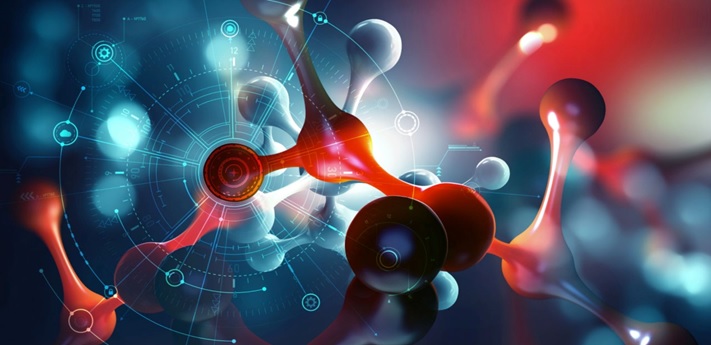Home » How Nanotechnology’s Emerging Applications are Improving Healthcare Industry

With its novel and developing uses, nanotechnology has the potential to fundamentally alter the dynamics of the healthcare industry. A new generation of nanostructures that may be used in the healthcare sector to a far greater extent has emerged as a result of advancements in nanoscience. It is creating new avenues of opportunity in the sector, including diagnostics, genetic diseases, vaccine development, regenerative medicine, gene therapy, cancer treatment, disease monitoring, surgical devices, and drug delivery, among others, thanks to its singular ability and set of properties to be implemented at atomic levels.
Primary healthcare applications of nanotechnology
In healthcare, nanomedicine involves a generation of substances on the nanoscale, i.e. at the atomic or molecular level. Nanomedicine has numerous applications in healthcare, including biosensors, tissue engineering, and diagnostic devices, among others. It performs a function on the same scale as numerous biological processes, cellular mechanisms, and organic molecules, and represents a particularly promising strategy. Nanotherapeutics are currently FDA-approved and available for clinical use, including treatments for cancer, elevated cholesterol, autoimmune disease, fungal infections, macular degeneration, and hepatitis.
Medical Treatment and Diagnosis Using Nanobots
A nanobot, sometimes known as a nanorobot, is essentially a tiny robot with a number of distinctive characteristics. They are between 50 and 100 nm broad and have been designed to perform a very precise, programmed purpose. Nanobots are built and developed using a nano manipulation tool. These are made to successfully complete duties like medicine distribution. Before a medicine or therapy reaches the diseased location, it often operates throughout the body. However, the treatment would be considerably more effective and the likelihood of any adverse effects would be reduced if the nanobots could carry the drug to the desired location.
Nanofibers
Nanofibers can be produced from a variety of polymers with diameters ranging from a few tens to one thousand nanometers and from their composites with inorganic materials. Nanofibers are lightweight with a small diameter and have porous structures that can be manipulated to provide a high surface-to-volume ratio. These Nanofibers are being developed with electrospinning, also termed electrostatic spinning. The polymer jet that undergoes elongation prior to solidification produces nanofibers. Nanofibers can exhibit a broad spectrum of physical properties that can be utilized for a variety of potential applications, including filtration, sensors, protective garments, tissue engineering, functional materials, and energy storage.
The younger generation is captivated by wearables due to their numerous advantages, such as comfort and real-time health & well-being monitoring. Internet of Things (IoT) and high-speed Internet connectivity are fostering the proliferation of ubiquitous electronic devices. Wearables monitor strain, pressure, temperature, other external stimuli, and human motion in order to provide vital health or physiological data. Wearables such as clothing, spectacles, and watches can be directly affixed to human epidermis to collect physical, chemical, and biological signals generated by the body or its surroundings. The technologies are expanding remote health care monitoring and human-machine interfaces on a daily basis.
Several of the major businesses are currently hard at work developing wearables based on nanotechnology. It tries to capture biological inputs and notifies physicians when congestive heart failure is present. In September 2021, Nanowear received its first software-only clearance as an end-to-end digital platform, enabling the business to market software-as-a-medical service that employs stand-alone artificial intelligence (AI) and deep learning algorithms to carry out remote diagnosis.
An interdisciplinary research project called NanoEDGE aims to combine functionalized electrode production methods with expertise in the fabrication and characterization of nanomaterial’s to create multi-level sensors that can track vital signs like electroencephalography (EEG) and electromyography (EMG). The area of wearable electronics based on nanotechnology has advanced quickly over the past few years and is anticipated to continue to expand greatly over the next few years as a result of intense innovation, technical change, and the active involvement of the tech giants.
Dr. Swapnila Roy
HOD, SOBAS
October 4, 2023RECENT POSTS
CATEGORIES
TAGS
Agriculture Agriculture future AI Architecture artificial intelligence Bachelor of Commerce BA English BA Psychology BTech AIML BTech CSE BTech cybersecurity BTech Engineering Business management career Career-Specific Education career guide career option career scope Civil engineering commerce and management Computer Science Computer science engineering Data science degree education Engineering Engineering students English Literature english program Fashion Design Fashion design course Higher Education Journalism journalism and mass communication law Law career Machine Learning mathematics MBA MBA specialization Mechanical Engineering Pharmacy Psychology Research and Development students
Nachauli, Jasana Road, Faridabad, Haryana
Address: C-72, Second Floor, Shivalik, Near Malviya Nagar,
Above HDFC Bank, New Delhi 110017
Landline No. - 011-46570515 / 45138169 / 41755703
Mobile No. - +91-7303152412 / +91-7303152420 / +91-9311321952
Toll Free: 1800-120-4613
Mobile : 8447744303 | 8447744304 | 8447744306 | 8447744309
8700003974 | 8700003411 | 8700003749
Copyrights © 1998 - 2025 Lingaya's Vidyapeeth (Deemed To Be University). All rights reserved.
LV only conducts physical/online verification of any document related to examination on the following email id:
It is important to note that the following email IDs and domains are fraudulent and do not belong to our university.